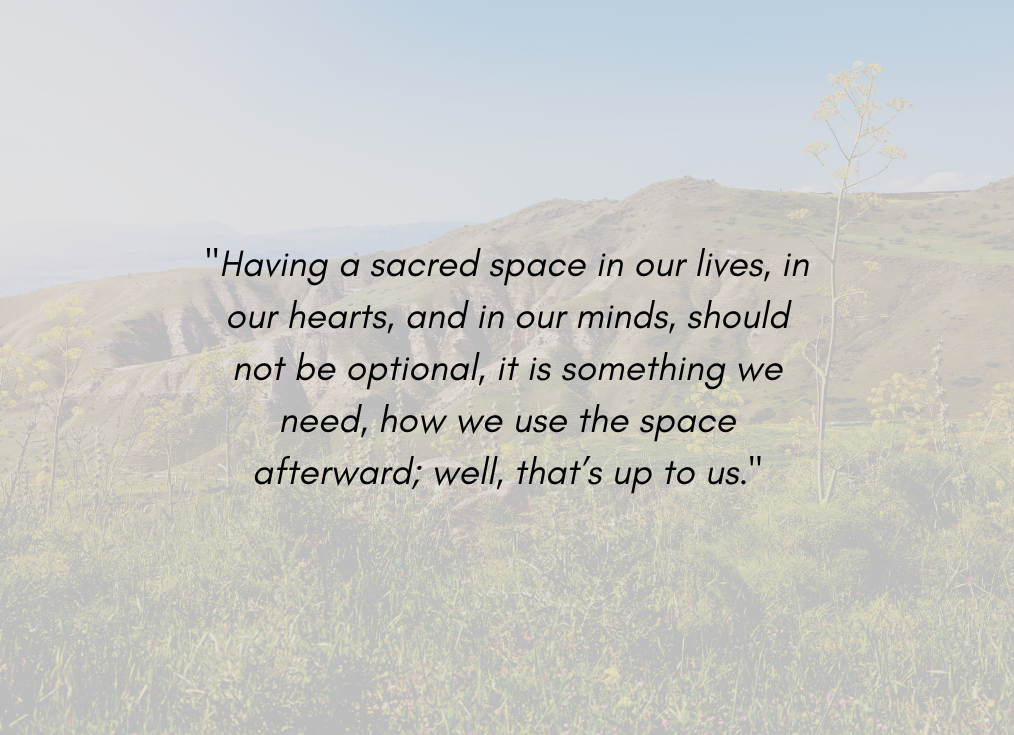Creating Sacred Spaces

March 17, 2023
In preparing to write this week’s column, I discovered a comparison of creation stories that I had never before considered. Candidly, this week’s double Torah portion, Vayakhel-Pekudei, is not particularly exciting. In fact, some Torah scholars consider the information shared in these texts as superfluous and unnecessary. Yes, they are the final two parshiot of Exodus, our second book of the Torah. However, to draw relevance and meaning to our 21st-century western-civilization lives from this particular text does not come easy.
And yet, when things seem most bleak, and when one is ready to throw in the proverbial towel, that’s when it’s most important to persevere and keep going. And it was during this phase of my study that I discovered the following insight.
With the addition of this week’s two chapters, the Torah devotes a total of thirteen chapters to the building of the Mishkan. It is no wonder that this week’s reading seems redundant and excessive. In contrast, consider that preceding this construction of the Tabernacle, the complete story of our people’s exodus from Egypt was summarized in eleven chapters. But wait, we can be even more concise. The entire description of Revelation at Mount Sinai was summarized in three chapters. And, of course, the story of creation, our entire universe’s formation into existence, was described in one chapter alone.
This leads us to assume that dedicating thirteen chapters to a single topic would suggest a significantly greater level of importance than the allocation of just one chapter to a seemingly lesser subject matter. Yet, if we consider the number of fields of study, volumes of research, and generations of scholars who have investigated the one chapter’s content versus the thirteen, history suggests differently. Even to the biblically uneducated person, if asked to describe the creation story versus the building of the Mishkan, I would be shocked if creation did not elicit a greater response 100% of the time, and I don’t believe that’s an exaggeration! So, what’s going on?
…
First of all, I believe that human nature perpetuates the “less is more” axiom. When given less information about something, our curiosity and interest are piqued, which drives our desire to investigate and discover more about the limited information being provided.
Yet second, sometimes “more is more.” Gd is handing us in these thirteen chapters the details, teaching us the importance, and guiding us through the process of understanding that creating a holy place is not something that should be left up to our own random discovery and curiosity. Having a sacred space in our lives, in our hearts, and in our minds, should not be optional, it is something we need, how we use the space afterward; well, that’s up to us.
Israel has always been my sacred space. I was not raised religious, but I was raised that Israel was my homeland as it was every Jew’s homeland, no matter where they lived around the world. I remember from my earliest visits exiting the airplane down the open aired stairs and strolling across the tarmac to the waiting buses. I remember seeing global dignitaries and religious leaders kiss the ground when they arrived. I remember sitting in front of the television when I was even too young to understand what I was watching and feeling the tension of news updates about wars and terror attacks, and conversely, the joy and pride of peace signings and Eurovision Song Contest achievements.
But today, my sacred space is in conflict in a very different way. Two sides of the same coin are fighting to see which side will end facing up as the coin spins erratically out of control in an arbitrary and haphazard direction.
I realize that Israel is no longer a neutral topic. Once upon a time, it was the unifier of a divided diaspora. It was what brought siloed communities together. Today, unfortunately, Israel divides us. Although, I believe that Jews, no matter what their political leanings outwardly express, internally are united on a single premise, that Israel should exist, and it should exist as the Jewish people’s homeland, just as it did when Ben Gurion declared it so 75 years ago.
This week I am struggling. My sacred space is in pain, and all I can think about is the customary phrase recited at the conclusion of reading a book of the Torah, hazak, hazak v’nithazek (“be strong, be strong, and we will be strengthened”).
Next Tuesday, former Member of Israel’s Knesset, Natan Sharansky, will be in San Antonio as the guest speaker for the Chabad L’Chaim Celebration. However, it is the words he expressed in his article published yesterday in The Times of Israel, that “the true danger is that we will stop talking with each other,” that I found most powerful. Sharansky has an incredibly unique life story. He is a 1986 recipient of the Congressional Medal of Honor and the 2006 Presidential Medal of Freedom recipient. He is the only living non-American citizen who is the recipient of these two highest American awards.
This week’s Torah portion teaches us that for Gd to create a space for humankind, is not a major effort, it only takes one chapter of the text. But, for people to create a sacred space for Gdliness, that requires much more effort, apparently thirteen chapters worth. Sharansky’s closing words of his article give me and my sacred space much hope, that we should come together so that, “we might avert disaster and start rebuilding the joint discourse that Israel – that we all – need.” Because we are…
STRONGER TOGETHER.
Shabbat Shalom,

